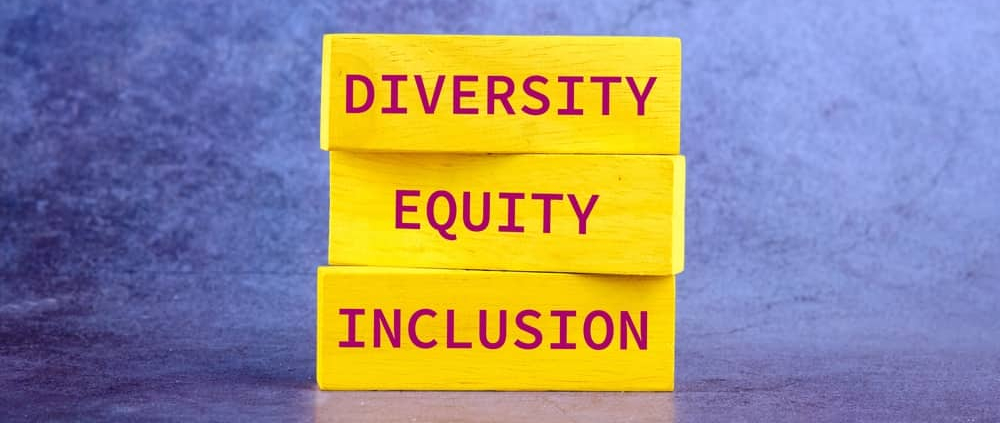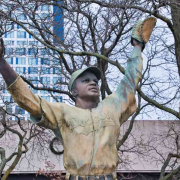The History of Diversity, Equality and Inclusion
By Brian Figeroux, Esq.
The history of diversity, equality, and inclusion in the United States is complex and multifaceted, reflecting the nation’s evolving attitudes and legal frameworks. This analysis explores these themes from 1492 to the present, focusing on the experiences of Native Americans, Black Americans, and women. By examining key periods, legislative milestones, and socio-political movements, we can better understand how the pursuit of diversity, equality, and inclusion has shaped American society. For more information on this analysis, please visit the Law Firm of Figeroux and Associates at www.askthelawyer.us.
Early Encounters and Colonial Period (1492-1776)
Native Americans
The arrival of Christopher Columbus in 1492 marked the beginning of European colonization, which had devastating effects on Native American populations. The doctrine of discovery and the subsequent policies of land acquisition and assimilation undermined Native American sovereignty and culture. European settlers viewed Native Americans as obstacles to their expansion, leading to numerous conflicts and forced removals.
African Americans
The transatlantic slave trade began in the early 17th century, bringing enslaved Africans to the American colonies. Enslaved Africans were subjected to brutal conditions and denied basic human rights. The institution of slavery was legally sanctioned, and the colonial economy became heavily dependent on slave labor.
Women
Colonial American society was patriarchal, with women largely confined to domestic roles. Women’s legal rights were limited, and they were excluded from political participation. The doctrine of coverture, which subsumed a woman’s legal rights and obligations under those of her husband, was widely practiced.
Revolutionary Era and the Early Republic (1776-1820s)
Native Americans
The American Revolution and the formation of the United States brought little relief to Native Americans. The new nation continued to expand westward, encroaching on Native lands. Treaties were often made and broken, leading to further displacement and violence against Native populations.
African Americans
The Declaration of Independence’s assertion that “all men are created equal” starkly contrasted with the reality of slavery. The U.S. Constitution, ratified in 1787, included the Three-Fifths Compromise, which counted enslaved individuals as three-fifths of a person for representation purposes. This compromise highlighted the deep-seated inequalities in the new nation.
Women
Women played significant roles in the Revolutionary War, but their status remained largely unchanged. Abigail Adams’ famous plea to “remember the ladies” went unheeded. The early Republic did not extend political rights to women, and their legal status remained subordinate to men.
Antebellum Period and Civil War (1820s-1865)
Native Americans
The Indian Removal Act of 1830, signed by President Andrew Jackson, led to the forced relocation of thousands of Native Americans from their ancestral lands in the southeastern United States to territories west of the Mississippi River. The infamous Trail of Tears epitomized the suffering and death resulting from these policies.
African Americans
The abolitionist movement gained momentum in the early 19th century, advocating for the end of slavery. Despite this, the institution of slavery expanded, particularly in the southern states. The Dred Scott decision of 1857 by the Supreme Court declared that African Americans, whether free or enslaved, were not U.S. citizens and had no standing to sue in federal court, reinforcing racial inequality.
Women
The women’s rights movement began to take shape during the antebellum period. The Seneca Falls Convention of 1848 marked a significant milestone, issuing the Declaration of Sentiments that called for women’s suffrage and equal rights. However, progress was slow, and women continued to face legal and social discrimination.
Reconstruction and the Gilded Age (1865-1900)
Native Americans
The end of the Civil War and the subsequent westward expansion led to increased conflicts between the U.S. government and Native American tribes. Policies aimed at assimilation, such as the Dawes Act of 1887, sought to undermine tribal sovereignty and communal landholding, further eroding Native cultures and communities.
African Americans
The Reconstruction Amendments (13th, 14th, and 15th Amendments) abolished slavery granted citizenship to all persons born or naturalized in the United States, and protected the right to vote regardless of race. However, the end of Reconstruction in 1877 led to the rise of Jim Crow laws in the South, institutionalizing racial segregation and disenfranchising African Americans.
Women
The women’s suffrage movement gained traction during this period, with organizations like the National American Woman Suffrage Association (NAWSA) advocating for the right to vote. Despite these efforts, women were still largely excluded from the political process, and gender discrimination persisted in many aspects of society.
Progressive Era and World War I (1900-1920)
Native Americans
The Progressive Era saw some reforms aimed at addressing the injustices faced by Native Americans. The Meriam Report of 1928 highlighted the poor living conditions on reservations and called for policy changes. However, significant progress was slow, and assimilation policies continued to dominate.
African Americans
The early 20th century saw the Great Migration, where African Americans moved from the rural South to urban areas in the North, seeking better economic opportunities and escaping Jim Crow laws. Despite this migration, racial discrimination and violence persisted, exemplified by events like the 1919 Chicago race riot.
Women
The Progressive Era brought significant advancements for women, culminating in the passage of the 19th Amendment in 1920, which granted women the right to vote. This period also saw increased participation of women in the workforce and the emergence of women’s organizations advocating for social reforms.
The Interwar Period and World War II (1920-1945)
Native Americans
The Indian Citizenship Act of 1924 granted U.S. citizenship to all Native Americans born in the United States, but many still faced significant barriers to voting and other civil rights. The Indian Reorganization Act of 1934, also known as the Wheeler-Howard Act, aimed to reverse assimilation policies and restore some degree of self-governance to Native tribes.
African Americans
The interwar period and World War II saw continued struggles for African Americans. Despite serving in the military, Black Americans faced segregation and discrimination both at home and abroad. The Civil Rights Movement began to gain momentum, laying the groundwork for future legal and social changes.
Women
World War II brought unprecedented opportunities for women as they entered the workforce in large numbers to support the war effort. However, the post-war period saw a return to traditional gender roles, and women were often expected to leave their jobs and return to domestic life.
Civil Rights Era (1945-1970)
Native Americans
The Civil Rights Era saw Native Americans joining the broader struggle for civil rights. The National Congress of American Indians (NCAI) was established in 1944 to advocate for Native rights. The Termination Policy of the 1950s, which sought to assimilate Native Americans and dissolve tribal lands, was met with resistance and eventually ended in the 1960s.
African Americans
The Civil Rights Movement achieved significant legal victories, including the Brown v. Board of Education decision in 1954, which declared racial segregation in public schools unconstitutional. The Civil Rights Act of 1964 and the Voting Rights Act of 1965 were landmark laws that prohibited racial discrimination and protected voting rights.
Women
The women’s liberation movement gained momentum during this period, challenging traditional gender roles and advocating for equality in the workplace, education, and politics. The Civil Rights Act of 1964 also included provisions against gender discrimination, marking a significant step towards legal equality for women.
Contemporary Period (1970-Present)
Native Americans
The American Indian Movement (AIM), founded in 1968, played a crucial role in advocating for Native rights and addressing issues of police brutality, poverty, and treaty violations. The Indian Self-Determination and Education Assistance Act of 1975 allowed for greater autonomy and control over federal funds. However, Native communities continue to face significant challenges, including high poverty rates and limited access to healthcare and education.
African Americans
The post-Civil Rights era has seen continued efforts to address systemic racism and inequality. The election of Barack Obama as the first African American president in 2008 was a historic milestone. However, issues such as police brutality, mass incarceration, and economic disparities persist, leading to movements like Black Lives Matter, which advocates for justice and equality.
Women
The contemporary women’s movement has focused on issues such as reproductive rights, workplace equality, and combating gender-based violence. The #MeToo movement, which gained prominence in 2017, highlighted the pervasive issue of sexual harassment and assault. Legal advancements, such as the Lilly Ledbetter Fair Pay Act of 2009, have aimed to address gender wage gaps, but challenges remain.
Federal and State Laws Impacting Diversity, Equality, and Inclusion
U.S. Constitution
The U.S. Constitution has both supported and hindered diversity, equality, and inclusion throughout American history. Initially, it upheld slavery and excluded women from political participation. However, subsequent amendments and interpretations have expanded rights and protections.
13th, 14th, and 15th Amendments
These amendments were crucial in abolishing slavery, granting citizenship, and protecting voting rights for African Americans. However, their implementation was uneven, and subsequent laws and practices, such as Jim Crow, undermined their effectiveness.
19th Amendment
The 19th Amendment granted women the right to vote, marking a significant step towards gender equality. However, full political participation for women, particularly women of color, was not realized until much later.
Federal Legislation
Civil Rights Act of 1964
This landmark legislation prohibited discrimination based on race, color, religion, sex, or national origin in employment, education, and public accommodations. It laid the foundation for subsequent anti-discrimination laws and policies.
Voting Rights Act of 1965
The Voting Rights Act sought to eliminate barriers to voting for African Americans and other marginalized groups. It has been instrumental in increasing voter participation and representation.
Americans with Disabilities Act (ADA) of 1990
The ADA prohibits discrimination against individuals with disabilities in all areas of public life, including jobs, schools, transportation, and public and private places open to the general public. This law has been vital in promoting inclusion and accessibility.
State Laws
State laws have varied widely in their support for diversity, equality, and inclusion. While some states have enacted progressive legislation, others have implemented policies that perpetuate discrimination and inequality.
Jim Crow Laws
Enacted primarily in Southern states, Jim Crow laws enforced racial segregation and disenfranchised African Americans. These laws were not fully dismantled until the Civil Rights Movement.
Affirmative Action
Affirmative action policies, implemented at both state and federal levels, aim to address historical injustices and promote diversity in education and employment. These policies have faced legal challenges and varying levels of support across different states.
New York State and City Laws
New York State and New York City have been at the forefront of promoting diversity, equality, and inclusion through progressive legislation.
New York State Human Rights Law
The New York State Human Rights Law, enacted in 1945, prohibits discrimination in employment, housing, and public accommodations based on race, color, creed, national origin, sex, disability, and other protected categories.
New York City Human Rights Law
The NYC Human Rights Law is one of the most comprehensive anti-discrimination laws in the country, offering broader protections than federal or state laws. It prohibits discrimination in employment, housing, and public accommodations based on numerous protected characteristics, including gender identity and sexual orientation.
Ongoing Challenges and Future Directions
Native Americans
Native American communities continue to face significant challenges, including poverty, limited access to healthcare and education, and the protection of their lands and resources. Ongoing efforts to honor treaties, promote sovereignty, and address historical injustices are crucial for achieving equality and inclusion.
African Americans
Despite progress, African Americans still encounter systemic racism, economic disparities, and social injustices. Efforts to address police brutality, reform the criminal justice system, and promote economic opportunities are essential for advancing equality.
Women
Women continue to fight for equality in the workplace, reproductive rights, and protection from gender-based violence. Policies that promote equal pay, access to healthcare, and support for working families are critical for achieving gender equality.
Intersectionality
Understanding and addressing intersectionality is essential for promoting diversity, equality, and inclusion. Individuals experience discrimination and inequality in different ways based on the intersection of their race, gender, socioeconomic status, and other identities. Inclusive policies and practices must consider these intersecting factors to be effective.
Conclusion
The journey towards diversity, equality, and inclusion in American history has been long and challenging. From the early encounters between Native Americans and European settlers to the modern-day struggles for civil rights, each period has seen significant advancements and setbacks. The experiences of Native Americans, Black Americans, and women highlight the importance of continued efforts to address historical injustices and promote a more inclusive society. While significant progress has been made, ongoing challenges require sustained commitment and action to ensure that diversity, equality, and inclusion are realized for all.









Leave a Reply
Want to join the discussion?Feel free to contribute!